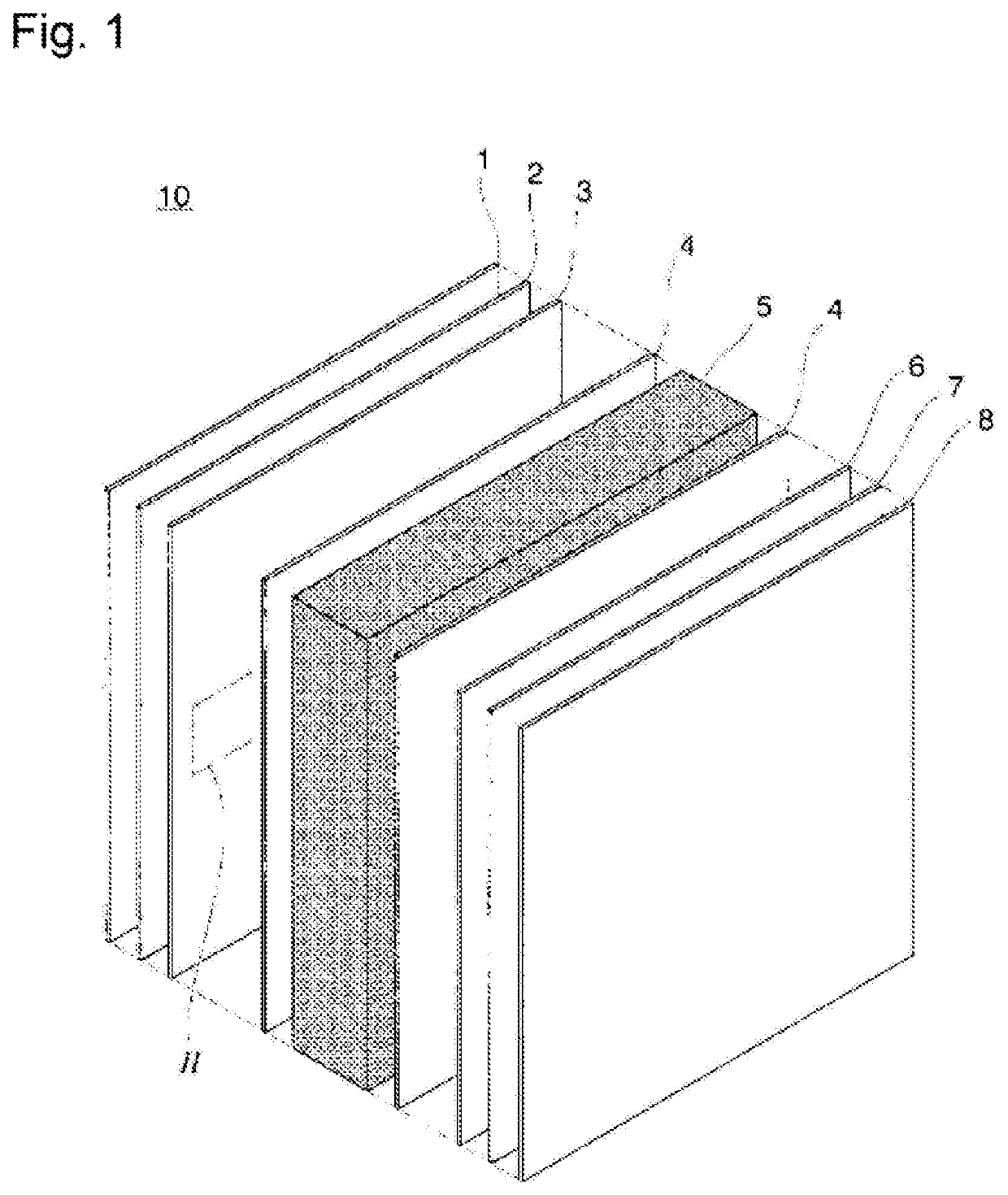Liquid crystal display element
a liquid crystal composition and liquid crystal technology, applied in the direction of liquid crystal compositions, instruments, chemistry apparatus and processes, etc., can solve the problems of troublesome and time-consuming to find out the conditions for optimization, slow optical switching of nematic liquid crystals, and inability to adjust the temperature of liquid crystals, etc., to achieve fast decay time
- Summary
- Abstract
- Description
- Claims
- Application Information
AI Technical Summary
Benefits of technology
Problems solved by technology
Method used
Image
Examples
example 1
[0725](Adjustment of Polymerizable Liquid Crystal Composition)
[0726]As an N-type liquid crystal composition, the composition represented by (LCN-1) below (Δn, 0.102; viscosity η, 16.8; Δε, −3.8) was prepared. The N-type liquid crystal composition (LCN-1) was heated to 60° C. and mixed with a solid polymerizable compound (V1-1-1) until dissolution. The mixture was observed under a polarized light microscope, and it was confirmed that polymerizable compound (V1-1-1) was dissolved uniformly and exhibited a nematic liquid crystal phase at room temperature. To this solution, photopolymerization initiator (I-1) was added. In this way, a polymerizable liquid crystal composition was prepared.
[0727](Fabrication of Liquid Crystal Display Element and Evaluation of Electrooptical Characteristics)
[0728]For the resulting liquid crystal to achieve a uniaxial alignment (homogeneous alignment), vertical alignment films coated with a polyimide vertical alignment film and having a cell gap of 3.6 μm w...
examples 2 and 3
[0733]The photopolymerization initiator was (I-1), and the composition of Example 2 or 3 in Table 1 was filled into a cell in the same way as in Example 1.
[0734]After the filling, the glass cell was taken out, and its opening for filling was sealed with a sealant 3026B (ThreeBond). Using an ultraviolet LED light source with a wavelength of 365 nm, the cell was irradiated with ultraviolet radiation at an intensity of 20 mW / cm2 at 25° C. for 60 seconds.
[0735]After the completion of ultraviolet irradiation, the alignment of the liquid crystal in the cell was observed under a polarized light microscope with the cell positioned to make the direction of rubbing at an oblique angle of 450 with respect to any of crossed-nicols polarizers. In the voltage-off state, there was a dark field, indicating that the liquid crystal was completely in a substantially vertical alignment. When the voltage applied was increased gradually, the cell became brighter as a result of its slitted section transit...
examples 4 and 5
[0740]As a liquid crystal composition having a P-type dielectric anisotropy, the composition represented by the formula (LCP-1) below (Δn, 0.109; viscosity η, 24 mPa·s; Vth, 1.62 Vrms) was prepared. The polymerizable compound was the compound represented by (V1-1-1) below.
[0741]A polymerizable liquid crystal composition was prepared that contained 98% to 97% by mass P-type liquid crystal composition (LCP-1), 1.96% to 2.94% by mass polymerizable compound (V1-1-1), and photopolymerization initiator (I-1) making up 2% by mass of polymerizable compound (V1-1-1).
[0742]For the resulting liquid crystal to achieve a uniaxial alignment (homogeneous alignment), a parallel-rubbed cell including ITO coated with a polyimide alignment film and having a cell gap of 3.6 μm was used. The polymerizable liquid crystal composition as a mixture of (LCP-1), (V1-1-1) and (I-1) was heated to 60° C. for dissolution and then filled into the glass cell by vacuum filling.
[0743]After the filling, the opening fo...
PUM
| Property | Measurement | Unit |
|---|---|---|
| nematic-isotropic transition temperature TNI | aaaaa | aaaaa |
| nematic-isotropic transition temperature TNI | aaaaa | aaaaa |
| nematic-isotropic transition temperature TNI | aaaaa | aaaaa |
Abstract
Description
Claims
Application Information
 Login to View More
Login to View More - R&D
- Intellectual Property
- Life Sciences
- Materials
- Tech Scout
- Unparalleled Data Quality
- Higher Quality Content
- 60% Fewer Hallucinations
Browse by: Latest US Patents, China's latest patents, Technical Efficacy Thesaurus, Application Domain, Technology Topic, Popular Technical Reports.
© 2025 PatSnap. All rights reserved.Legal|Privacy policy|Modern Slavery Act Transparency Statement|Sitemap|About US| Contact US: help@patsnap.com



